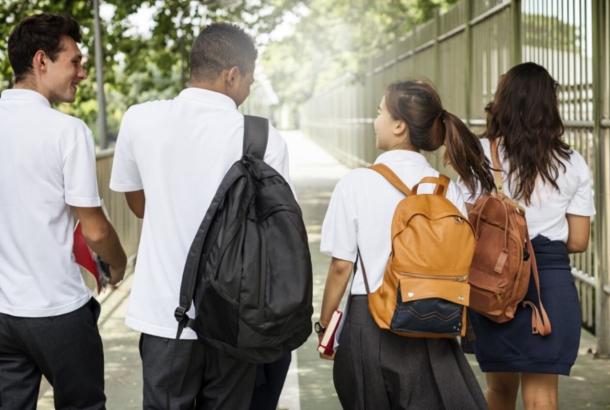
School violence, including bullying, is widespread: one in three learners is bullied at school every month globally. The growing use of digital devices has exacerbated cyberbullying. In 2019, at least 10% of learners aged 8-10 had experienced cyberbullying, rising to 20% of learners aged 12-14. School violence can leave long-lasting impacts on learners’ safety, physical and mental health, and their education outcomes.

Contributing to UNESCO’s work on fostering safe learning environments, which addresses many different forms of violence, the UNESCO Chair on Bullying and Cyberbullying, in collaboration with the World Anti-Bullying Forum (WABF), led an international working group to create a more holistic and inclusive definition of school bullying. Professor James O’Higgins Norman, UNESCO Chair on Bullying and Cyberbullying, shares his insights on this work.
Many current anti-bullying programmes in schools are rooted in early definitions characterizing bullying as an “unwanted aggressive behavior that is repeated over time and involves an imbalance of power or strength”. While this was groundbreaking at the time and advanced the work of researchers, policy makers, educators and others, evolving perspectives have deepened our understanding of bullying.
Research shows that progress in reducing school bullying has been slow, with only a 19% decrease in perpetration and a 15% drop in the rate of learners facing bullying. This means we must reassess our understanding and approaches to bullying, especially in our increasingly complex world, where both in-person and online bullying intertwine with personal and societal issues.
As a UNESCO Chair, my role involves facilitating interdisciplinary research and dialogue, and working towards a more holistic approach to bullying. Our recommendation for a ‘whole-education’ approach to tackle bullying recognizes individual, contextual, and societal dimensions.
With support from UNESCO and the WABF, I facilitated the working group to revisit the definition of bullying, consulting scholars, policymakers and practitioners worldwide. We gathered feedback from a diverse group and have conducted wide consultations. This working group was launched following the recommendations by a Scientific Committee on preventing and addressing school bullying and cyberbullying, convened by UNESCO and the French Ministry of Education, Youth and Sports.
The proposed definition promotes a holistic and inclusion-driven approach to tackling bullying and violence in schools and in online spaces.
Crafting a more inclusive definition has the potential to break down academic and professional barriers, encouraging cooperation between sectors, and among scholars, policymakers, educators, and learners. It provides a solid foundation to better understand bullying particularly regarding those most marginalized due to appearance, ethnicity, gender, social class, or sexuality, among others. Bullying is a complex issue tied to individual, contextual, and structural factors, making collaboration essential.
Together, we can deepen our understanding and address not only the behavior but also the underlying systems and ideologies supporting bullying.
My vision aligns with United Nations Sustainable Development Goal 4, on education, in that our work on bullying, and all other forms of school violence, is aimed at ensuring an inclusive and equitable quality education and the promotion of lifelong learning opportunities for all.
To teachers and school staff: Do not accept bullying as normal. Create a safe classroom environment by setting clear expectations for kindness and respect, remain vigilant for signs of bullying, stay informed about effective prevention strategies, and promptly address any incidents. Implement a robust anti-bullying policy. Under the idea of a ‘whole-education’ approach, collaborate with colleagues and parents, incorporate empathy and anti-bullying content into the curriculum, and use collaborative learning methods.
To learners: Report bullying, be confident in recognizing and responding to it, and encourage bystander intervention. You have the power to stop bullying.
The working group presented its proposed revised definition of school bullying at the WABF held in October 2023. The proposed definition reads:
School bullying is a damaging social process that is characterized by an imbalance of power driven by social (societal) and institutional norms. It is often repeated and manifests as unwanted interpersonal behaviour among students or school personnel that causes physical, social, and emotional harm to the targeted individuals or groups, and the wider school community.
This new inclusive definition of school bullying was largely welcomed by delegates at the Forum. The UNESCO Chair and WABF hope that this revised definition will contribute to opening a new chapter in the global conversation on the nature of and responses to bullying and cyberbullying.
For UNESCO, the new definition of bullying reflects our approach and work to ensure that schools are safe and supportive learning environments. This means that to end all forms of school violence, including bullying, we must understand that these behaviours do not happen in isolation, that there are different drivers of violence, and that a ‘whole-education’ approach is needed.